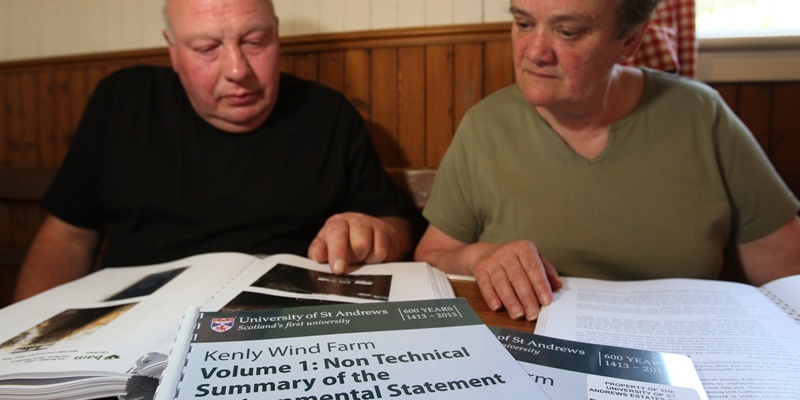A row has broken out over St Andrews University’s proposals to cater for all its energy needs through a purpose-built wind farm.
The six 100m turbines would be built at Upper Kenly near Boarhills and university officials hope the project would help tackle its spiralling power bills.
However, The Courier has discovered significant resistance to the plans.
Opposition was manifest during a meeting of the Boarhills and Dunino Community Council. A spokesman said most respondents to a questionnaire on the proposals were “unambiguous” in their objections.
Meanwhile, research carried out by the university has left community council officials less than impressed.
The spokesman said, “We were not satisfied with the results of a student’s earlier survey used by the university. It was based on 46 replies from Kingsbarns, Boarhills and Dunino only 26 of which were from Boarhills and Dunino.”
He added, “The community council sent a questionnaire to all local residents asking whether they were in support of, not in support of, or had no opinion about the university’s plans.”
The spokesman said the vast majority opposed the proposal.
“There were 126 votes representing approximately a 50% return rate,” he said. “Of those, 24 were in support (19%) and 87 were not in support (69%).”
The remainder had no opinion (6%), did not vote (5%) or spoilt their paper (1%).
The spokesman said, “The main areas of concern were landscape, noise, property value and health. Respondents felt there were better forms of renewables and some suggested power cables should go underground.”
There were also concerns that the community benefit promised by the university would be hard to administer.
The community council will communicate the results of its survey to Fife Council and is urging the public to make their feelings known.
The spokesman said, “As a statutory consultee, we will be writing to Fife Council with these results, and would encourage as many people as possible to write on their own behalf as well.”
A spokesman insisted the university “stood by” its own questionnaire, saying it was carried out at a public meeting using a methodology that is “robust and accountable.”
He said, “The detailed results of our questionnaire were shared with the community council representatives who sit on our project working group. The university applauds the community council’s endeavours to gather information, but these surveys are fraught with difficulty.”
He added, “Our results showed that over 46% of people were either supportive or strongly supportive of the planned wind farm. Meanwhile, 48% thought that Kenly was an acceptable location for a wind farm.”
The spokesman said, “Without seeing the results and further analysis of the community council’s questionnaire, we find it difficult to comment further at this stage.”
